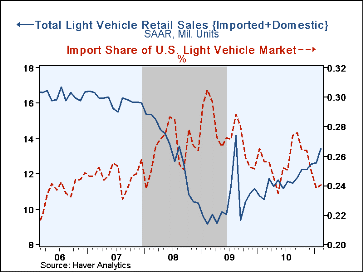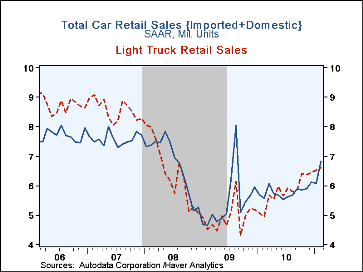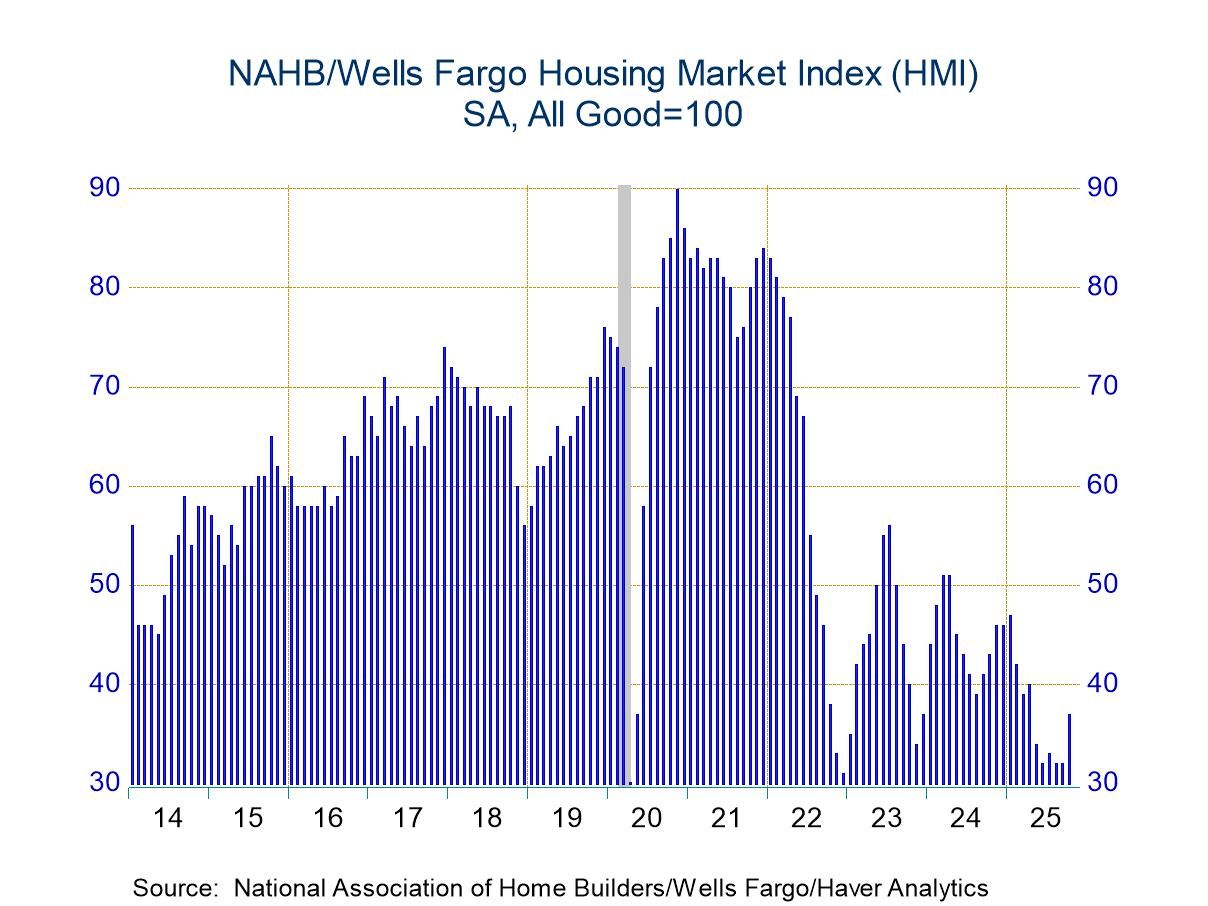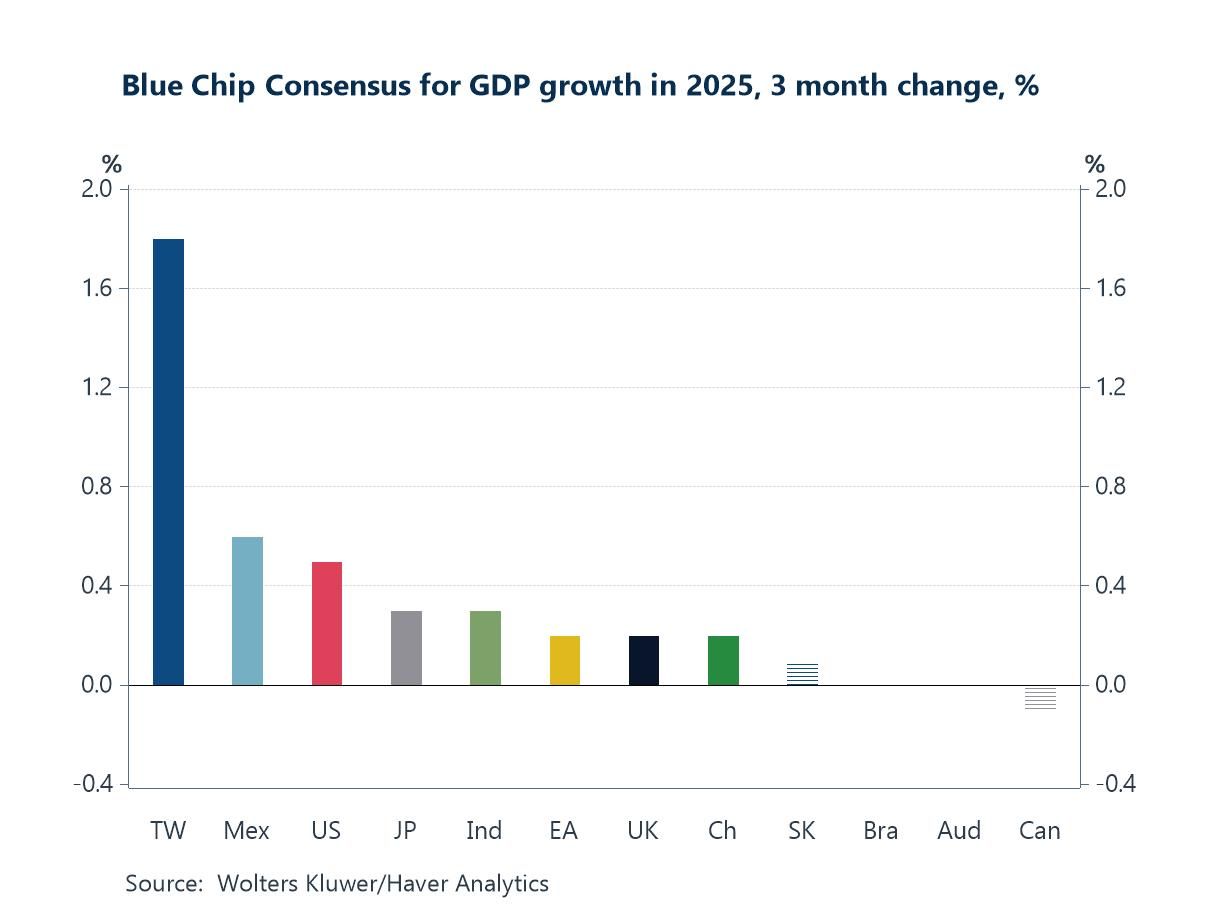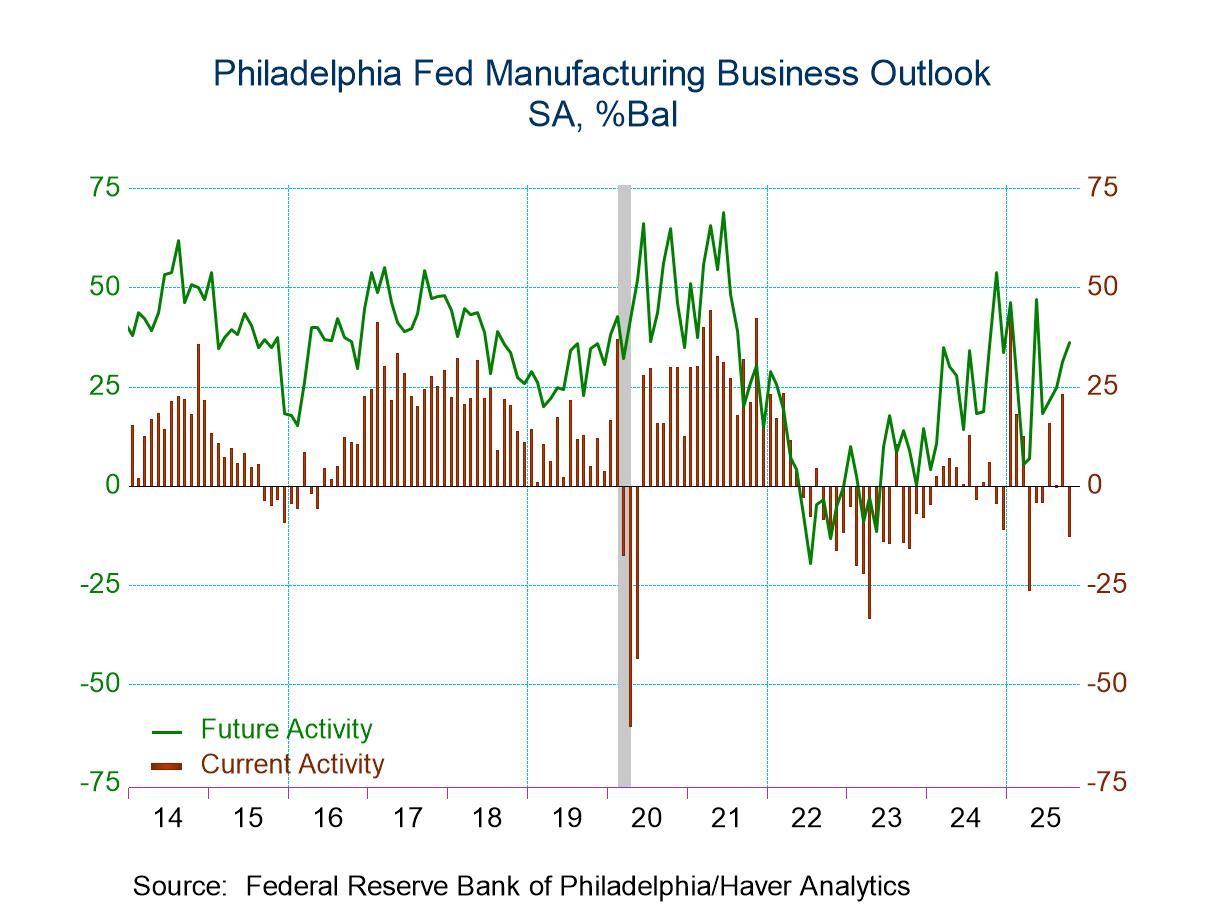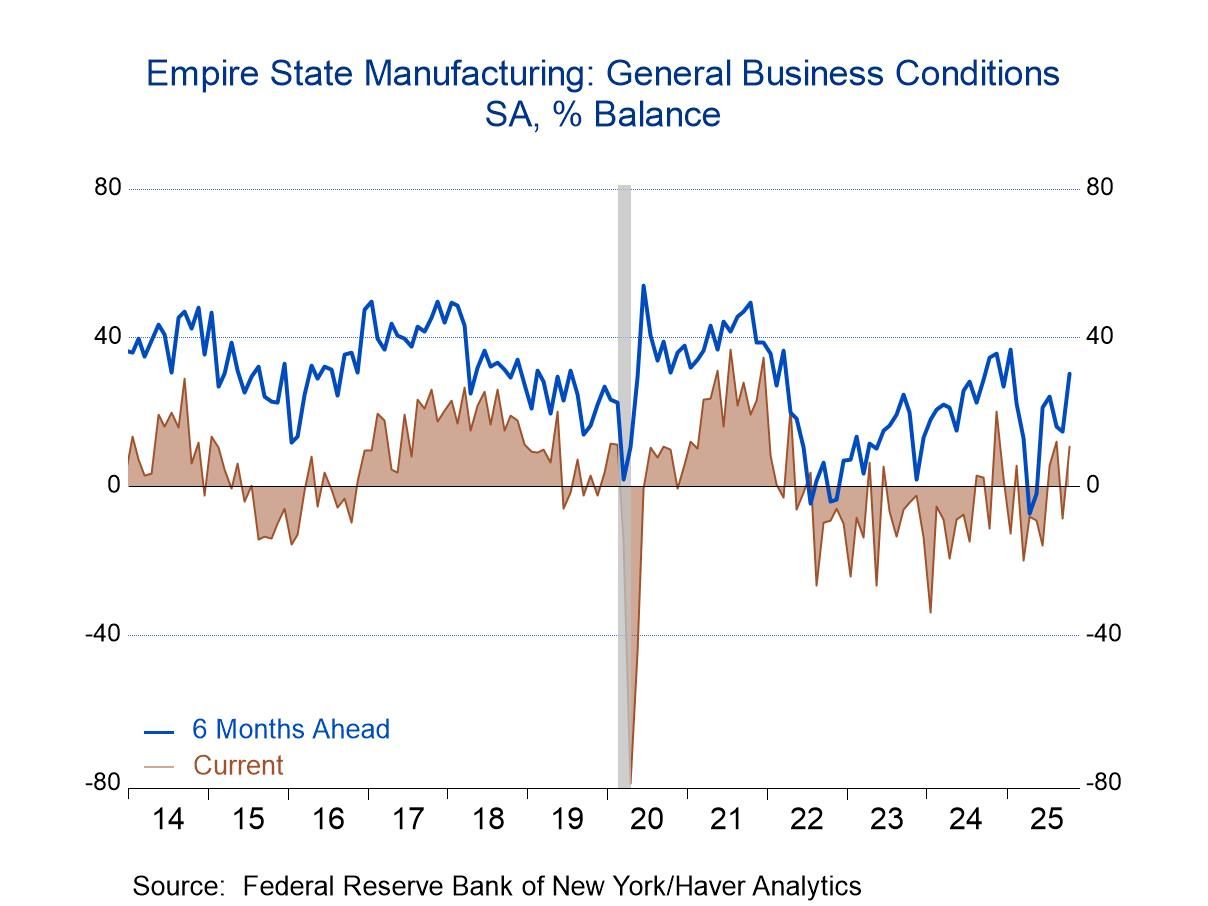 Global| Mar 02 2011
Global| Mar 02 2011U.S. Vehicle Sales Unexpectedly Rise Further
by:Tom Moeller
|in:Economy in Brief
Summary
The consumers' appetite for purchasing a new motor vehicle remains hearty. Unit sales of light vehicles jumped 6.4% last month versus January to 13.44M units (SAAR). Consensus had estimated sales of 12.7M according to the Bloomberg [...]
The consumers' appetite for purchasing a new motor vehicle remains hearty. Unit sales of light vehicles jumped 6.4% last month versus January to 13.44M units (SAAR). Consensus had estimated sales of 12.7M according to the Bloomberg survey. (Seasonal adjustment of these figures is provided by the U.S. Bureau of Economic Analysis.) The gain lifted sales 27.5% versus last year to the highest level since aggressive rebates propped up sales during August 2009.
Sales of fuel efficientautos were strongest with a 12.1% rise m/m to 6.83M. A 13.8% m/m gain in domestics pulled them up by more than one quarter over the last three months. Imported auto sales gained a lesser 8.5% m/m but surprisingly are down versus November. Held back by the rise in gasoline prices, which really picked up steam during the last three months, sales of light trucks rose a minimal 1.2%, about the same as in January, to 6.61M. They're up 3.6% since November. Sales of domestics nudged up 0.5% and by only 4.0% over the last three months. Sales of full efficient imported light trucks rose 4.9% m/m and by 2.0% during the last three.
For the month, import's share of the U.S. light vehicle market held roughly stable m/m at 24.0%. (Imported vehicles are those produced outside the United States.) Imports' share of the U.S. car market slipped to 31.3% for February versus the record 35.0% for all of 2010. Imports' share of the light truck market nudged up M/M to 16.5%, equal to that during all of last year but down from the record 19.7% in 2009.
The U.S. vehicle sales figures can be found in Haver's USECON database.
| Light Vehicle Sales (SAAR, Mil. Units) | Feb | Jan | Dec | Y/Y | 2010 | 2009 | 2008 |
|---|---|---|---|---|---|---|---|
| Total | 13.44 | 12.62 | 12.55 | 27.5% | 11.58 | 10.38 | 13.22 |
| Autos | 6.83 | 6.09 | 6.11 | 22.4 | 5.78 | 5.45 | 6.76 |
| Domestic | 4.69 | 4.12 | 4.01 | 25.5 | 3.78 | 3.56 | 4.44 |
| Imported | 2.14 | 1.97 | 2.10 | 16.1 | 2.02 | 1.89 | 2.32 |
| Light Trucks | 6.61 | 6.53 | 6.44 | 33.3 | 5.80 | 4.93 | 6.46 |
| Domestic | 5.51 | 5.49 | 5.41 | 34.6 | 4.84 | 3.96 | 5.28 |
| Imported | 1.09 | 1.04 | 1.03 | 27.3 | 0.96 | 0.97 | 1.18 |
Tom Moeller
AuthorMore in Author Profile »Prior to joining Haver Analytics in 2000, Mr. Moeller worked as the Economist at Chancellor Capital Management from 1985 to 1999. There, he developed comprehensive economic forecasts and interpreted economic data for equity and fixed income portfolio managers. Also at Chancellor, Mr. Moeller worked as an equity analyst and was responsible for researching and rating companies in the economically sensitive automobile and housing industries for investment in Chancellor’s equity portfolio. Prior to joining Chancellor, Mr. Moeller was an Economist at Citibank from 1979 to 1984. He also analyzed pricing behavior in the metals industry for the Council on Wage and Price Stability in Washington, D.C. In 1999, Mr. Moeller received the award for most accurate forecast from the Forecasters' Club of New York. From 1990 to 1992 he was President of the New York Association for Business Economists. Mr. Moeller earned an M.B.A. in Finance from Fordham University, where he graduated in 1987. He holds a Bachelor of Arts in Economics from George Washington University.


